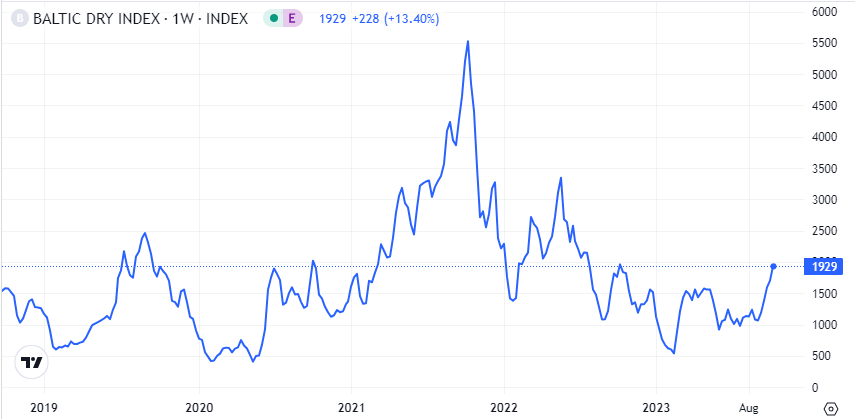Global small caps have outperformed large since 1998. Here’s why you should consider investing
Small caps are a notoriously volatile part of the equity market, which is why it may come as a surprise to many that global small caps have outperformed large caps for more than 20 years on an annualised basis. Of course, if you only look at the last few years, large caps surged with performance concentrated in seven mega-cap tech stocks.
But we could be about to see global small caps stage a comeback.
It’s part of the equities market that Australian investors are often underexposed to (hometown bias anyone)? Additionally, global small caps are looking undervalued, which means now could be the right time to get in.
.png)
I spoke to Sadhvi Gupta, executive director for Quantitative Investment Strategies at Goldman Sachs about the outlook for global small caps, the key factors that define a good company and how she and her team are currently investing for the Yarra Global Small Companies Fund, a Fund that launched in 1999 and has been managed by Goldman Sachs Asset Management since 2016. We also discussed all things AI and how Gupta and her team use this as a part of their portfolio management – or as Gupta refers to it, “the glass box approach, not the black box”.
The silver lining for global small caps
The outperformance of large caps over the past few years comes down to a few things. The free money era, which has drawn to an end, is one. Another is that market uncertainty typically drives investors towards large caps.
“When investors are scared, they start buying into large-cap names. Large caps become a safe haven and these stocks outperform,” says Gupta.
Then this year, outperformance has really come down to concentration in the seven big tech names – Gupta says this is a risk for investors to monitor in their portfolios.
“Markets have benefitted from the resilience of recent US activity data and falling inflation, but we are less positive on Europe. It is lagging the US, and as winter approaches there’s a chance energy inflation will come back,” Gupta says.
She also notes that the Chinese recovery trend has not lived up to hype and she expects weakness in the US in the coming year, even though markets have been surprisingly resilient to date.
This could be a positive for small caps.
“If we are in an era where rates start to decline, which we expect in the second half of next year, that may be a tailwind for small caps because small caps with a lot of debt are usually negatively impacted by rising rates,” Gupta says.
Further to this, “small caps tend to be price takers so if there’s high inflation, profitability is usually hurt. But we are starting to see inflation fall so that will be a better environment for them.”
In addition, Gupta points out that small caps tend to benefit more from an economic recovery than large caps. They are typically more nimble and are able to adjust to changing market conditions quicker than large caps. Getting in now could be a good opportunity to capitalise on market recovery. After all, small-caps have historically traded around a 25% premium to large caps based on growth prospects, but are currently trading at par.
How to use artificial intelligence to find good companies
To start with, a few stats for the Yarra Global Small Companies Fund. These are on a daily basis.
- 7,500: the number of companies reviewed
- 200+: the number of factors used in selecting companies
- 1,000,000+: the number of data points analysed
To state the obvious, there’s no human way possible to get through these which is why the team uses artificial intelligence and a quantitative approach to narrow down the companies identified for the portfolio. The portfolio is fairly large and can hold between 350 and 750 companies. It currently holds 636.
That’s not to say this is an automated or arm’s length process.
The portfolio management team heavily researches factor ideas before they are included in their investment model, making sure they make sense intuitively as well as quantitatively work in backtests. The team has used alternative sources of data ("big data") since 2008 and machine learning since 2011. It has evolved to include large language models (like those used in Chat GPT) since last year. The tools also consider linkages between industries and performance on a peer group basis and has tailored factors per industry – such as the value of patents in biotechnology companies.
“Our portfolio managers define exactly what makes a good company, but because there are so many stocks and ideas, we use the computers to do the maths, identify opportunities and then the portfolio managers review and sign off on the selection,” says Gupta. In addition to alpha considerations, the process also considers the risks and transaction costs involved.
She points out computers cannot always pick up on sudden changes in the market, such as geopolitical events like the Russian invasion of Ukraine or the US elections. This has meant that the portfolio management team sometimes take discretionary risk management decisions to monitor the exposures in the portfolio.
So what factors make a good small cap company?
Gupta believes there are four key factors.
- Quality – one aspect of this is where consumers are spending their money and which companies might be more profitable at the end of the quarter.
- Valuation – this uses traditional metrics such as equity price to book alongside alternative data points specific to industries. One example is looking at rental occupancy rates and amounts of rent that can be charged for real estate companies versus peers.
- Sentiment – this considers institutional and retail sentiment with institutional buying suggesting a positive signal and retail buying indicating possible shorter-term activity.
- Trends surrounding a stock – this considers not only mega-trends but how events, companies and industries are interconnected in ways that might not always be obvious.
Where to invest in global small caps
A lot changes in a year, and Gupta says some of the themes the models pick up have shifted accordingly.
For example, at the start of the year, many across the market anticipated a huge benefit from China’s reopening to European luxury names. But the models have been swift to pick up that this wasn’t becoming the reality.
“If you look at consumer data, you can see that Chinese consumers are not buying or travelling as expected. Whereas the luxury story is different in the US because they have a much stronger domestic consumption case. We are still slightly positive on US luxury names but more negative on European,” says Gupta.
Another theme has been the semiconductor story.
“We are pretty flat on semiconductors in the US and Europe. Their performance compared to regional indices has been flat or they’ve underperformed. But semiconductor names are doing well in Japan and we continue to invest there,” she says.
With the recent increases in energy prices, she has also watched the model’s trends-based factors become more bullish on energy names over the course of the year, particularly exploration and production companies in this space.
The Yarra Global Small Companies Fund does typically tend towards similar sector and regional allocations to its benchmark, the MSCI World Small Cap Index in $A, which has meant that its larger positions are in the consumer discretionary and industrials sectors – the portfolio is overweight compared to the benchmark in these sectors.
In the industrials space, Gupta points to marine transportation (i.e. shipping) as a particular theme they have captured since early 2021.
“We identified early on that the world was reopening after COVID and there was a lot of supplies that needed to get from point A to B and not many ways to do that. Marine transportation companies saw a huge price improvement,” she says.
One of the data points reflecting this was the Baltic Exchange Dry Index which measures
prices for moving materials by shipping. Gupta notes that there was a 56%
increase in September which typically would translate to marine transportation companies’
profits.

Another aspect of industrials that the portfolio favours is electric equipment companies.
From a consumer discretionary perspective, Gupta points to diversified consumer services and automobile components as areas favoured by the models.
The risks to monitor for small caps
While Gupta believes the environment is more likely to be positive for small caps, investors should be mindful of risks such as interest rates staying higher for longer or if inflation starts to climb again. These are typically more challenging for small caps which tend to be more price takers and often have higher debt.
She doesn’t believe in timing the market and suggests investors consider the structural case for investing in small caps.
These include:
- Higher growth potential compared to many large caps (noting potential for higher volatility).
- Diversification (the magnificent seven tech stocks are 20% of the MSCI World Index and 28% of the S&P500 so small cap investing can help reduce the tech concentration risk).
- Longer term performance in this space.
Small caps also tend to do better than large caps in the early stages of a fresh market cycle – and given they are looking cheap at the moment, it could be an opportunity to get in before the rest of the market does and ride the recovery.
Then there’s the small matter of buying into the future.
“The small caps of today are really what will be the large caps of tomorrow. You’re buying these companies at a cheaper price and can be part of the price appreciation as it happens,” says Gupta.
Sadvhi and her team manage the Yarra Global Small Companies Fund, a Fund that launched in 1999 and has been managed by Goldman Sachs Asset Management since 2016.
For more information on the Yarra Global Small Companies Fund, please click below:

4 topics
1 fund mentioned
1 contributor mentioned

